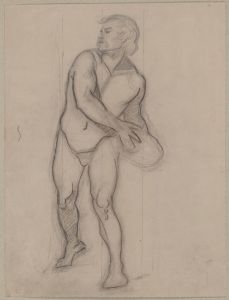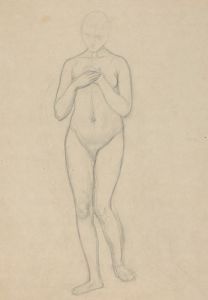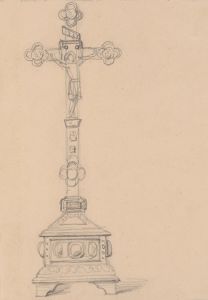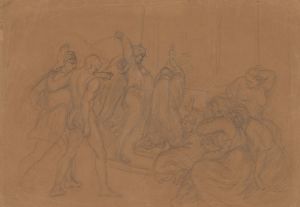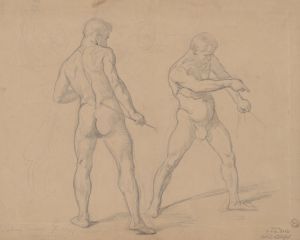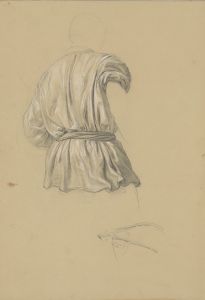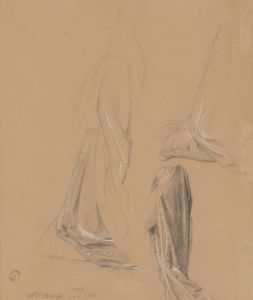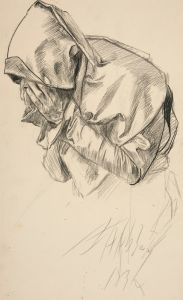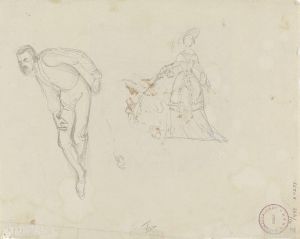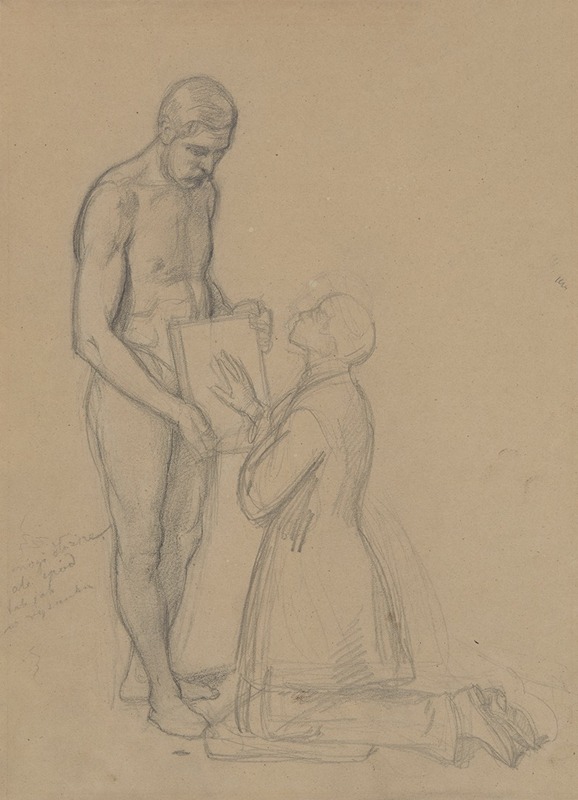
Sketch of the figure of Queen Jadwiga and Jaśko of Tęczyn for the painting ‘Queen Jadwiga’s Oath’
A hand-painted replica of Józef Simmler’s masterpiece Sketch of the figure of Queen Jadwiga and Jaśko of Tęczyn for the painting ‘Queen Jadwiga’s Oath’, meticulously crafted by professional artists to capture the true essence of the original. Each piece is created with museum-quality canvas and rare mineral pigments, carefully painted by experienced artists with delicate brushstrokes and rich, layered colors to perfectly recreate the texture of the original artwork. Unlike machine-printed reproductions, this hand-painted version brings the painting to life, infused with the artist’s emotions and skill in every stroke. Whether for personal collection or home decoration, it instantly elevates the artistic atmosphere of any space.
Józef Simmler, a prominent Polish painter of the 19th century, is well-known for his historical and genre paintings, often depicting significant events and figures from Polish history. One of his notable works is the painting "Queen Jadwiga’s Oath," which captures a moment from the life of Queen Jadwiga of Poland, a revered monarch in Polish history. The painting is celebrated for its historical accuracy and emotional depth, reflecting Simmler’s dedication to portraying Polish heritage.
Queen Jadwiga, born in 1373, was the daughter of Louis I of Hungary and Elizabeth of Bosnia. She became the first female monarch of the Kingdom of Poland, reigning from 1384 until her death in 1399. Jadwiga is remembered for her piety, intelligence, and political acumen. Her reign marked the beginning of the Polish-Lithuanian union, as she married Władysław II Jagiełło, the Grand Duke of Lithuania, which was a strategic alliance that significantly influenced the region's history.
The painting "Queen Jadwiga’s Oath" is believed to depict a solemn moment in Jadwiga’s life, possibly related to her coronation or a significant decision during her reign. Simmler’s work often focused on such pivotal moments, aiming to capture the essence of the historical figures and the gravity of their actions. The sketch of the figure of Queen Jadwiga and Jaśko of Tęczyn for this painting highlights Simmler’s attention to detail and his commitment to historical authenticity.
Jaśko of Tęczyn, also known as Jan of Tęczyn, was a notable Polish nobleman and a member of the influential Tęczyński family. The Tęczyński family was one of the most powerful and respected families in medieval Poland, with significant political influence. Jaśko’s inclusion in the sketch suggests his importance in the context of the event being depicted, although specific historical records of his interactions with Queen Jadwiga are limited.
Simmler’s artistic style is characterized by meticulous attention to detail, realistic portrayals, and a deep understanding of the historical context. His works often convey a sense of drama and emotion, drawing viewers into the historical narrative. In "Queen Jadwiga’s Oath," Simmler’s use of light, composition, and expression would have been intended to highlight the solemnity and significance of the moment.
The painting, like many of Simmler’s works, serves as a visual representation of Polish history, aiming to educate and inspire viewers about the country’s past. Through his art, Simmler contributed to the preservation and celebration of Polish cultural and historical identity, making his works valuable both artistically and historically.
While specific details about the sketch of Queen Jadwiga and Jaśko of Tęczyn are limited, the broader context of Simmler’s work and the historical significance of the figures involved provide insight into the importance of this artistic endeavor. Simmler’s dedication to historical accuracy and his ability to convey complex narratives through his art continue to be appreciated by art historians and enthusiasts alike.





